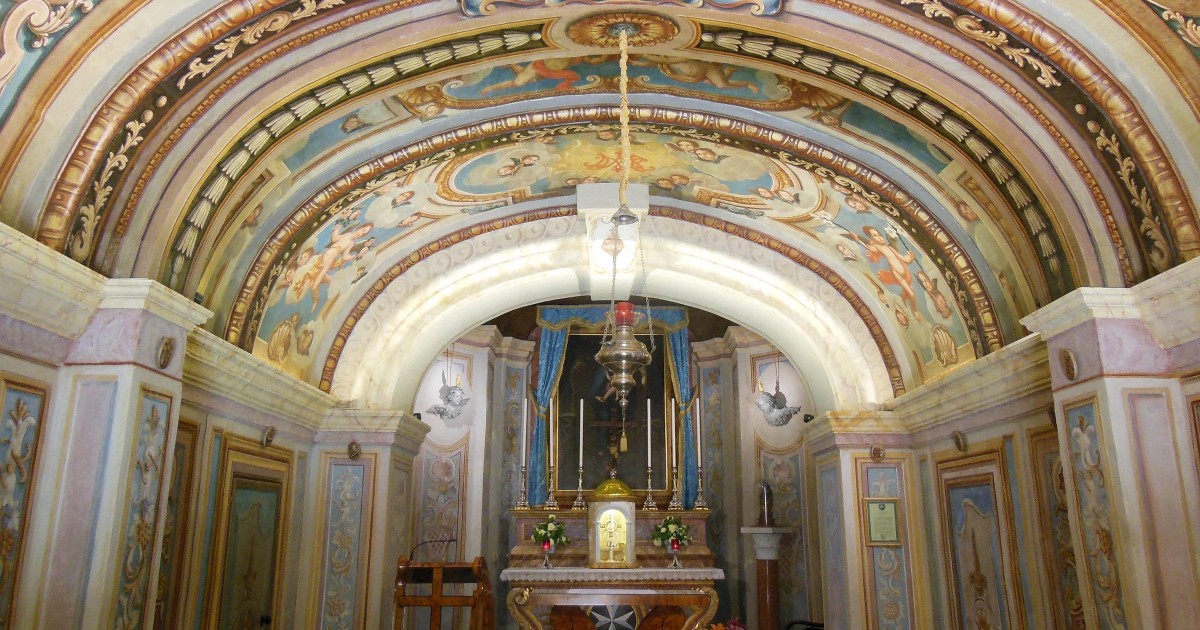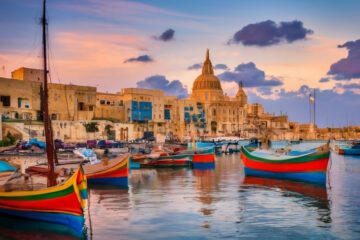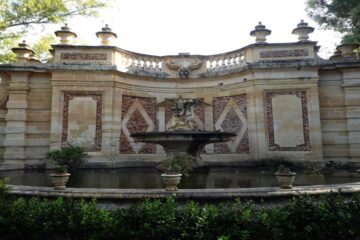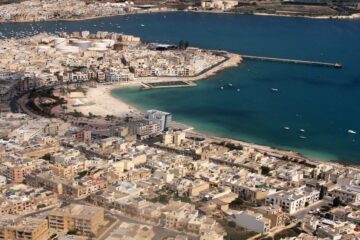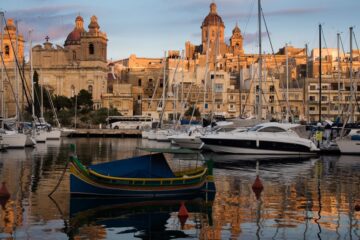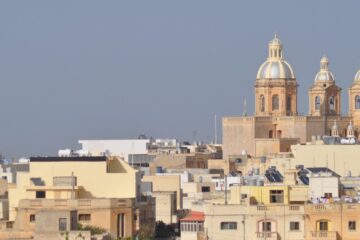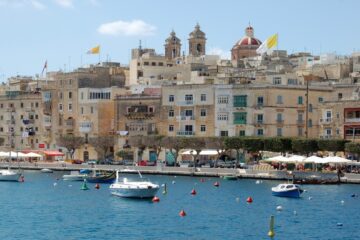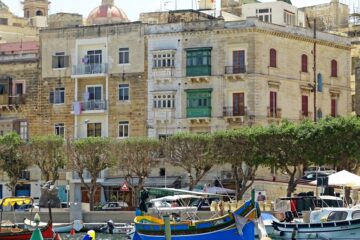Located in the Central Region of Malta is the town of Balzan. Originally known as Attard, it was renamed in the 16th century after the Italian nobleman Francesco Balzan. Throughout its history, Balzan has been associated with several significant events. It was the site of a major battle during the Great Siege of Malta in 1565 and other battles during the 17th and 18th centuries. In more recent times, Balzan has become renowned for its vibrant cultural life, which attracts artists and writers from across Europe. Today, it is home to over 6,000 people who are proud to call this charming town their home. Let’s discover the most interesting facts about Balzan.
Attard is a town in the Central Region of Malta
Attard is a town situated in the Central Region of Malta, historically known for its strategic importance as a fortified outpost of the nearby city of Mdina. This location had high walls and towers to protect against attack and was an essential element of Malta’s defense system. Balzan facts reveal that this town was renamed in the 16th century after the Italian nobleman Francesco Balzan. Its name reflects its strategic importance as a fortified post that ensured safety during times of war and conflict. The legacy left by Francesco Balzan lives on today, with Attard still standing strong as one of Malta’s most important locations.
The town was renamed Balzan in the 16th century, after the Italian nobleman Francesco Balzan
In the 16th century, a town in Malta was renamed Balzan to commemorate the Italian nobleman Francesco Balzan. He had been an influential figure in the region, and his generous donations of land for the construction of a church had earned him lasting recognition. His legacy lives on in the town’s name, which serves as a reminder of his kind and benevolent nature. Furthermore, Balzan would also become associated with another important event: it was the site of a major battle during the Great Siege of Malta in 1565. This siege saw the Knights Hospitallers fight off an Ottoman invasion that threatened to take control over Malta and its surrounding islands, ultimately leading to their victory. As such, it is safe to say that Balzan remains an important symbol, both for its historic association with Francesco Balzan and for its role in one of Europe’s most celebrated battles.
Balzan was the site of a major battle during the Great Siege of Malta in 1565
During the Great Siege of Malta in 1565, Balzan became the site of a major battle between the Ottoman Turks and the Knights Hospitallers. The town was defended by a small force of Hospitallers, supported by Maltese militia and other local forces. Despite being heavily outnumbered, they were able to successfully repel several attacks from the Ottoman Turks, culminating in an Ottoman retreat after their failed attack on August 9th. This victory was critical in ensuring that Malta remained under the control of the Knights Hospitallers and was not conquered by the Ottomans. This battle at Balzan is remembered as a crucial moment in Malta’s history and a symbolic victory for freedom-loving people everywhere. In addition to this battle, Balzan was also the site of a number of other battles during the 17th and 18th centuries, as it continued to be an important stronghold for Malta against foreign invaders.
Balzan was also the site of a number of other battles during the 17th and 18th centuries
Throughout the 17th and 18th centuries, Balzan continued to be an important site for military conflicts due to its strategic location and significance. During this time, it was the site of a number of battles between the Order of St. John, the French, and the British. The town suffered damage in these battles but was able to rebuild each time. As a result, Balzan’s strategic importance and history became a source of pride for its citizens, who saw themselves as guardians of their city’s heritage. This period also marked an increase in tourism as people began to visit Balzan to learn more about its past and experience its unique cultural offerings. With increased tourism came increased wealth, which allowed for further development and preservation of the city’s architecture and monuments. The long-term effects of these battles on Balzan are still visible today in its traditional buildings and monuments, which attract visitors from around the world. As such, Balzan serves as a lasting reminder of Malta’s turbulent history between rival forces during this period in time. In addition, it is also an example of how people can come together in times of strife to preserve their culture and identity despite external threats or challenges.
In the 19th century, Balzan became a popular destination for artists and writers
The 19th century saw Balzan transform into a haven for artists and writers, drawn to its beauty and tranquility. These creative types were attracted by the stunning landscapes, peaceful atmosphere, and cultural institutions such as the Balzan Museum and Library. Moreover, they found inspiration in the community of fellow creative minds who had made their homes in Balzan. Notable features include:
- Picturesque cobblestone streets lined with charming townhouses
- A vibrant art scene full of life and energy
- Various public spaces provide venues for performances or gatherings.
This golden age for Balzan was a time of great creativity and productivity, as these talented individuals created works that would influence generations to come. As such, it is clear why this period was so attractive to those seeking an ideal place to live and create their art.
Balzan was also home to a number of notable Maltese families
Nestled in the northern reaches of Malta, Balzan was home to many prominent families, such as the De Piro, Mamo, and Scicluna families. These three families played an integral role in the development of Balzan over the centuries. The De Piro family was particularly influential during the 19th century, when they established a number of successful businesses in Balzan, including a winery and silk factory. The Mamo family was also instrumental in building up Balzan’s economy with their banking enterprise and investments in property development. Lastly, the Scicluna family contributed significantly to the cultural life of Balzan through their patronage of local artists and writers. This appreciation for culture led to an influx of creative people making Balzan their home during this period. Today, these three families are still deeply embedded within Balzan’s society as respected members of its community whose legacies continue to shape its identity. As such, it is clear that these notable Maltese families had a lasting impact on the town’s history and development.
Today, Balzan is a thriving town with a population of over 6,000 people
Today, Balzan is a vibrant town boasting a population of more than 6,000 people and offering an abundance of attractions to its residents and visitors alike. It has become a popular tourist destination due to its historical and cultural offerings, such as:
- Stunning churches with well-preserved fortifications
- Charming streets lined with unique local shops
- An array of restaurants serving traditional Maltese cuisine
- Numerous public parks offer recreational activities
- A variety of museums showcasing the island’s culture. In addition, Balzan offers an intimate atmosphere for those seeking an immersive experience in a quaint Mediterranean village. From leisurely strolls through its picturesque streets to enjoying the views from nearby hilltops, this charming town offers something for everyone.
Frequently Asked Questions
What is the average cost of living in Balzan?
The average cost of living in Balzan is typically higher than the national average due to the area’s attractive amenities and location. The cost of groceries, housing, utilities, transportation, healthcare, and entertainment can be significantly more expensive than elsewhere in Malta.
Are there any popular tourist attractions in Balzan?
Popular tourist attractions in Balzan include the dungeons of Verdala Palace, Hagar Qim Temples, and Ġgantija Temples. There are also scenic walks through nature reserves, parks, and attractive gardens.
Are there any notable educational institutions in Balzan?
Notable educational institutions in Balzan include St. Monica School, a private co-educational school offering elementary and secondary education, and St. Joseph Institute for the Deaf, which provides specialized services to deaf students.
What types of businesses are located in Balzan?
Balzan is home to a variety of businesses, including restaurants, cafes, shops, banks, and medical centers. Additionally, there are numerous professional services, such as accountants, lawyers, and architectural firms. All these establishments contribute to the commercial vibrancy of the area.
What types of recreational activities are available in Balzan?
In Balzan, recreational activities include tennis, horseback riding, swimming, and hiking. There are also various parks and gardens with walking paths for enjoying nature. Local gyms provide classes in yoga and fitness. Cultural events such as concerts and festivals are regularly held throughout the year.
Conclusion
Balzan is a historical and vibrant town located in the Central Region of Malta. It has seen its share of battles but has also hosted some of the country’s most prominent families and artists over the centuries. Today, Balzan remains an attractive destination for visitors looking to explore its history and culture while enjoying modern amenities. Balzan offers a unique experience full of facts, beauty, traditions, and charm that will leave any visitor with lasting memories. The rich heritage found in Balzan has been carefully preserved over time, making it a great place to discover the best that Malta has to offer.

